Now that we’ve comfortably settled into autumn, I can admit that I kind of hate summer. I don’t talk about this very much because people seem to consider it roughly equivalent to being a Communist or a baby-eater. Summer-dislike is a relatively new thing, just since I moved to the sweaty mid-Atlantic at the millenium. I grew up in Milwaukee, where, starting sometime late in spring every year, the local forecasts remind area residents that it’s “cooler by the lake,” and you can look forward to wearing shorts and drinking beer outside. In the Milwaukee of my childhood, and probably even today with climate change and all, you can count on daytime highs of 75 to maybe, maybe 85 degrees at the lakefront. You turn off the air conditioner and open the windows at night so you can hear the crickets. In Washington/Baltimore, you can count on stagnant 95 degree days like being smothered by sopping hot towels. Even at midnight, you can find yourself standing in the dark, soaked in sweat, mainlining Gatorade and begging for the sweet release of death.
Unlike the celebrated summer of the Great Lakes, the months between Memorial and Labor Day out east are good for two things only, which admittedly are pretty good. One is the beach, which is self-explanatory. The other is farm stands, with their array of limited-time-only goodies like sweet corn, tomatoes, melons, and stone fruit. Nothing against apples and oranges, of course, but they store so well that they’re available, and fine quality, all year. Try buying a decent peach in December, though. It doesn’t exist; the only available specimens were picked weeks earlier, rock-hard and barely golden, in another hemisphere, and soften into rosy-looking but cottony imitations of the real thing.
When peaches come into season, their partisans go crazy. In the classic Seinfeld episode “The Doodle,” Kramer extols the virtues of the Mackinaw peach, an elusive (and fictional) treat from Oregon available for only two weeks a year. “It’s like having a circus in your mouth!” Evidently, the Mackinaw peach has become a holy grail of peaches for many fruit enthusiasts; Google “mackinaw peach” for numerous accounts of disappointed peach fiends who go hunting only to be mocked and turned cruelly away. In too good to be true fashion, the Portland Food Group discussion about Mackinaw peaches devolved almost immediately into hostile foodie one-upmanship. If you thought PDX was all about laid back, flannel-wearing potheads, think again.
So don’t go looking for Mackinaw peaches, or annoy the PDX food community with well meaning questions about their seasonal treat. It doesn’t exist. And now that it’s a little late in the season, the remaining peaches in markets aren’t the juice gushers of mid-July and August. Don’t let them go to waste, though – pickle them. You won’t taste a more delicious combination than pickled peaches with any smoked meat. Brisket, pork shoulder, chicken, turkey, duck – all are vastly improved by the addition of the pickled peaches.
Pickle brine seems like a no-brainer to pour down the drain. Don’t do it! As is the case with boozy peaches, a lot of the peach flavor leaches out into the pickling liquid. Strain and keep it refrigerated for use in shrubs or cocktails like the Kentucky Pig & Peach. NB: the first dish I ever developed was an emulsion of dill pickle juice (Vlasic or Claussen) and butter. I was four years old. Pickle butter is the shit when you smear it on Triscuits.
Smoked pork belly, chicharrón, pickled peach
In this dish, a smoked cured belly – basically bacon – serves as the foil to the sweet-tart peaches. If you like some kind of starch with your meats, grits or creamed corn are the way to go.
This dish has multiple components, each requiring multiple steps. If you can’t deal with all of them, you can get the gist of the flavor combination by making the pickled peaches, and then preparing the pork through the poaching phase. Slice, brown the fat side, and serve with pickled peaches on the side.
Start the pork at least two days and up to a week before service. You’ll cure overnight, then smoke and poach the next day. If you have time, weight the belly for a great firm texture and even thickness.
For the pork:
1 lb belly, trimmed of skin (reserve skin for chicharrón, below)
2 tsp salt
2 tsp sugar
1/2 tsp white pepper
peppercorns, thyme and bay
2 quarts chicken stock
1 inch chunk yellow rock sugar
6 sprigs thyme
2 bay leaves
1/4 c usukuchi soy
1 head garlic, sliced along equator
1/4 c white wine vinegar (same as used in the peach pickle)
2 shallots, minced
1 c dry, floral white wine
2 c smoked pork stock (from braise)
bay leaf
2 sprigs thyme
2″ section of licorice root
1 star anise
6 tbsp unsalted butter.
Combine the salt, sugar, and white pepper. Coat the belly evenly with the seasoning and place with peppercorns, thyme, and bay in a vessel just large enough to hold the belly. Cure under refrigeration, turning over after 12 hours. If you have extra time, cure up to 4 days and turn after each.
Rinse the cured belly and pat dry. Set up a smoking apparatus with charcoal and apple or hickory wood chunks (I use an offset smoker) and smoke the belly at 180F for 3 hours.
Combine the stock, sugar, thyme, soy, and the garlic. When it comes to a simmer, add the smoked belly. Simmer until just tender, about 2 hours. Remove the belly from the liquid; strain and set aside. If you have time, seal in a bag or wrap in clingfilm and chill down; then place in a small container, about the same size as the belly. Top with another container or cutting board and weight, refrigerated, at least four hours.
For the reduction:
Prepare the reduction. Bring the shallot and vinegar to a simmer in a saucepot over medium low heat. When the vinegar has reduced to au sec, add the wine and reduce again to au sec. Add the stock, herbs, and spices and reduce by about 2/3. Strain through a chinois and mount with cold butter.
To serve, cut the belly into 1×2″ rectangles. Score the fat on top and place, fat side down, in a hot pan over medium heat for 2 minutes. Transfer to a 250F oven for another 6 minutes. Serve the seared belly atop the reduction and the pickled peach purée, and serve with a chicharrón.
For the chicharrón:
skin from pork belly
grapeseed or rice bran oil
Scrape as much fat as possible from the underside of the skin. Divide into several strips about 1″ wide.
Place the skin in a sauce pot with water and bring to a boil. Boil for about an hour, until gelatinous and flexible. Add more water, if necessary, to keep the skins completely submerged during boiling.
Drain and, when cool, trim any remaining fat from the skins. Place on a silpat on a sheet pan and dry in a 160F convection oven for 2-4 hours (times will vary based on the thickness of the skin) until completely dry and glassy. Cool completely. Store in a tightly covered container – if you have a silica dehydrator pack, add it to the container. You can store these for a fairly long time, but with a silica pack, they may become too dry to puff well at some point, so try to use them within a month.
To cook, bring a pot of grapeseed or rice bran oil to 360F. Break the skins into chips about 3/4″ square and add not more than two at a time to the oil. Using a spider, keep turning the chips as they puff. Once they have completely puffed, remove and drain on paper towels; salt and serve immediately.
For the pickled peach:
2 lbs peaches, peeled, pitted, and sliced into 12-16 slices each (depending on size)
1 c white wine vinegar (champagne is best)
1 c filtered water
1/2 c + 1 tbsp granulated sugar
1 tsp kosher salt
4 star anise
about 2 dozen Pondicherry (true red) peppercorns [Note: this is not the same as pink peppercorn; substitute black if unavailable]
4-6 dried jasmine flowers (elderflower is great also)
Combine the vinegar, water, sugar, salt, spices, and flowers and bring just to a boil, ensuring the salt and sugar are dissolved.
Divide the peaches among mason jars and pour the pickling liquid evenly over them, distributing the spices and flowers. Chill down and store. The peaches will be mildly pickled after about 6 hours and are optimal at 2-7 days.
As depicted in the photo, the peaches and their pickling liquid have been blended to a sauce. Blend all the peaches (sans spices or flowers) with enough pickling liquid to achieve a medium-bodied purée.
Kentucky Pig & Peach
I developed this recipe to use up a bottle of bacon-flavored vodka a friend brought possibly as a hostess gift and possibly to razz me. That’s the “pig.” But during a recent visit to Kentucky’s MB Roland craft distillery, we picked up a bottle of Black Dog – basically white dog in which dark-fired (smoked) corn constitutes part of the mash. That kind of smoky white dog is even better in this drink, if you can get it.
Don’t use pickling brine from the first two days of pickling to make this drink; it won’t be peachy enough, and somewhat too sour. Whatever brine you don’t use to make this drink you can strain into a clean container and keep for months in your refrigerator.
Final note: as with most things, better ingredients = better cocktail. But it’s dumb to waste really top drawer booze on a mixed drink. Use something decent, like Maker’s Mark, but don’t use your single-barrel whiskies; save those for sipping.
For two cocktails:
1 1/2 oz vinegar from pickled peaches
2 oz bourbon
2 oz smoked white dog [MB Roland’s Black Dog] or bacon vodka
6 drops barrel-aged sorghum bitters
2 large ice cubes, plus extra
Stir all the ingredients besides the ice cubes. Place one large cube in each of two old-fashioned glasses. Strain the cocktail over ice and serve. A little sprig of mint would not be out of place.

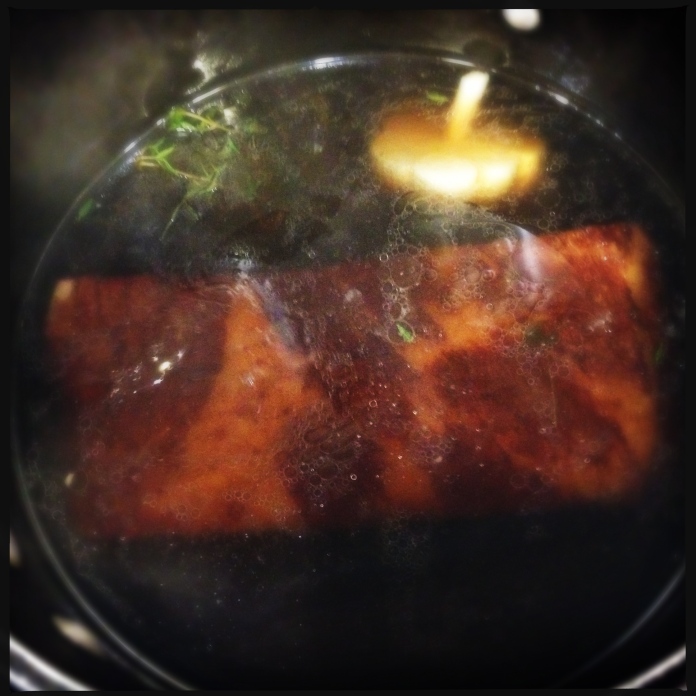
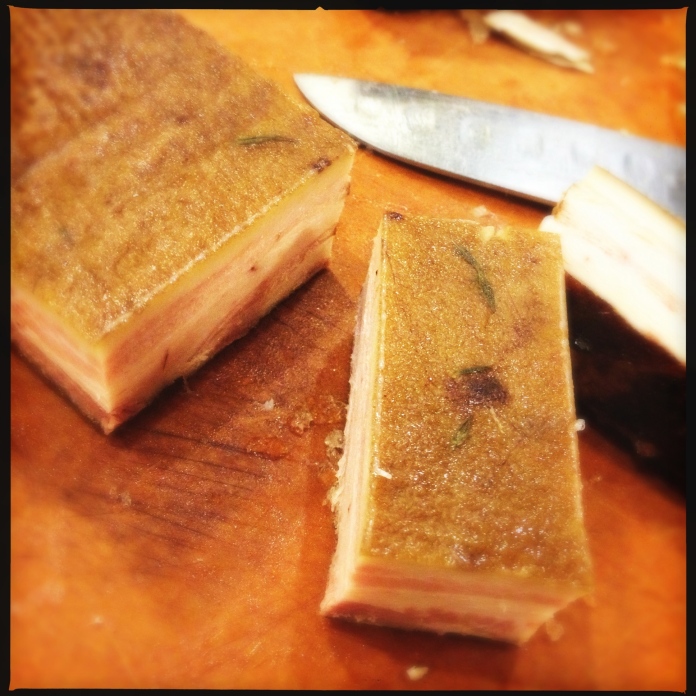
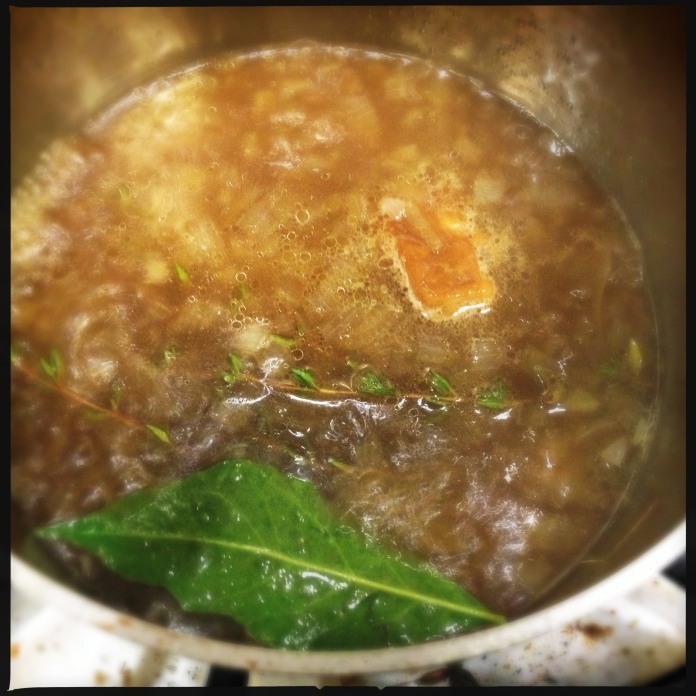
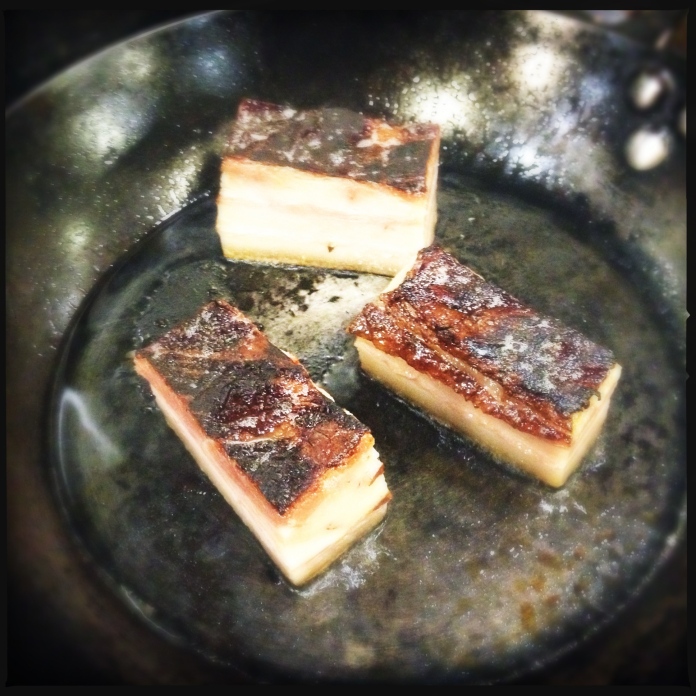
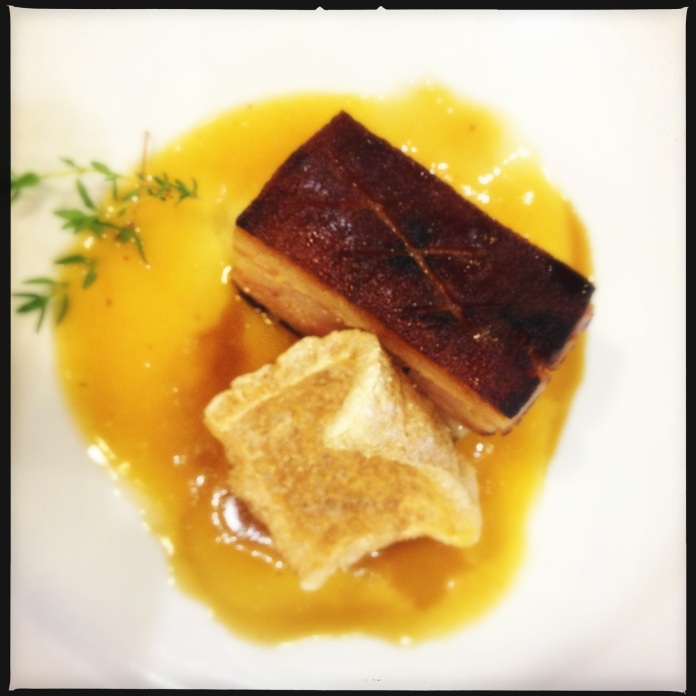
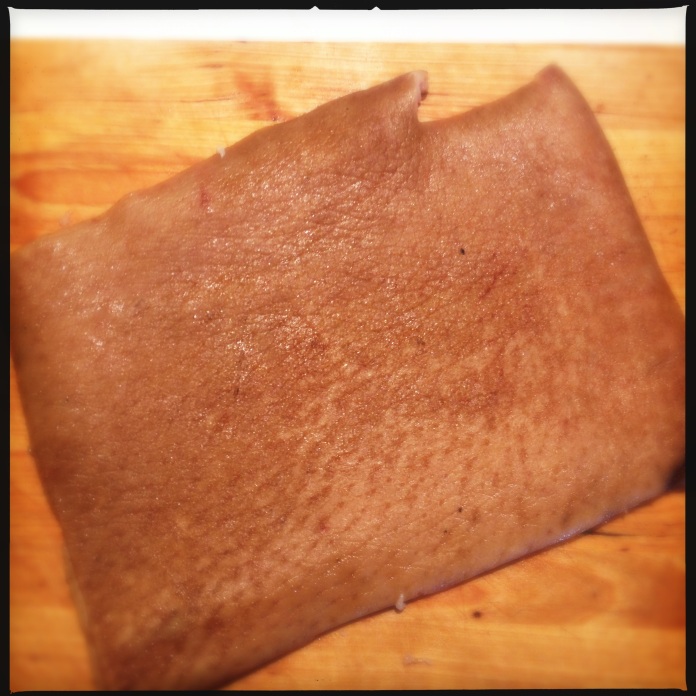
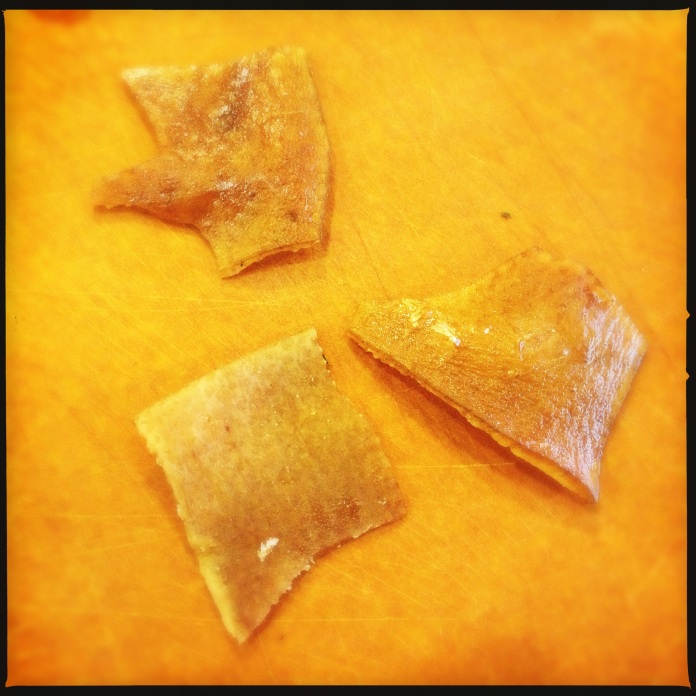



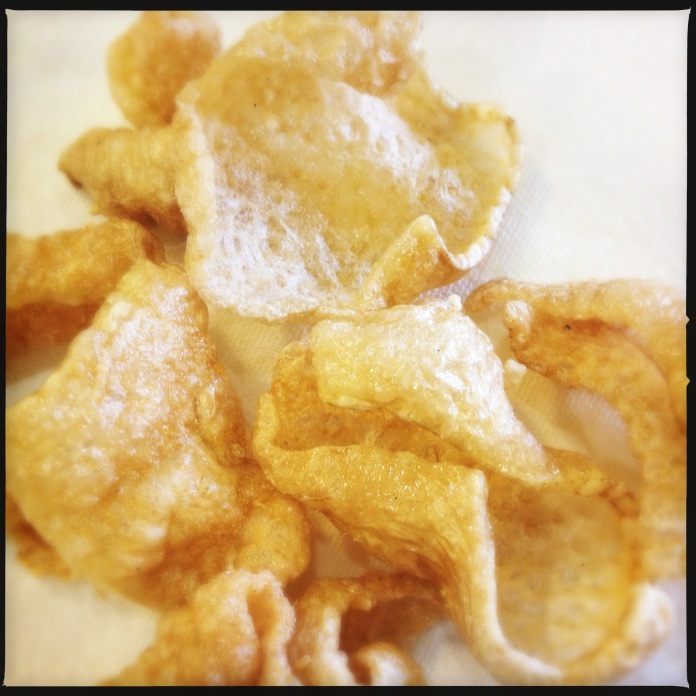

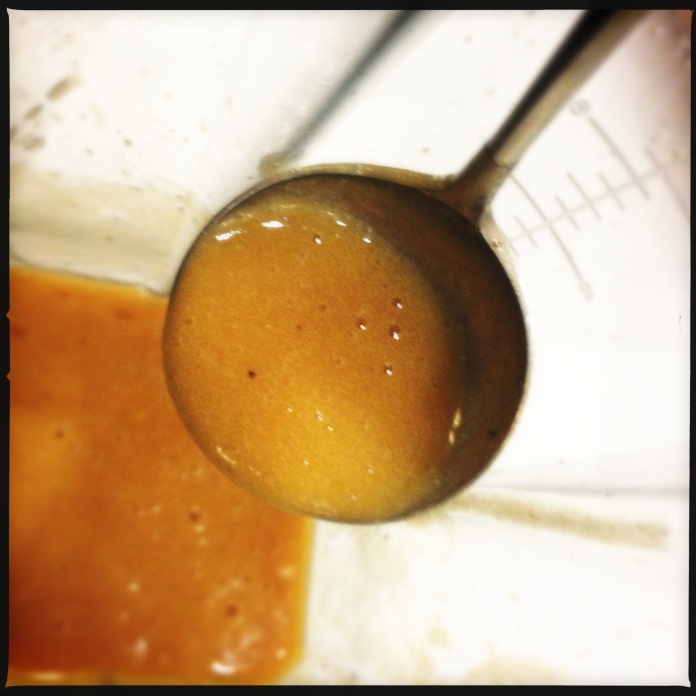
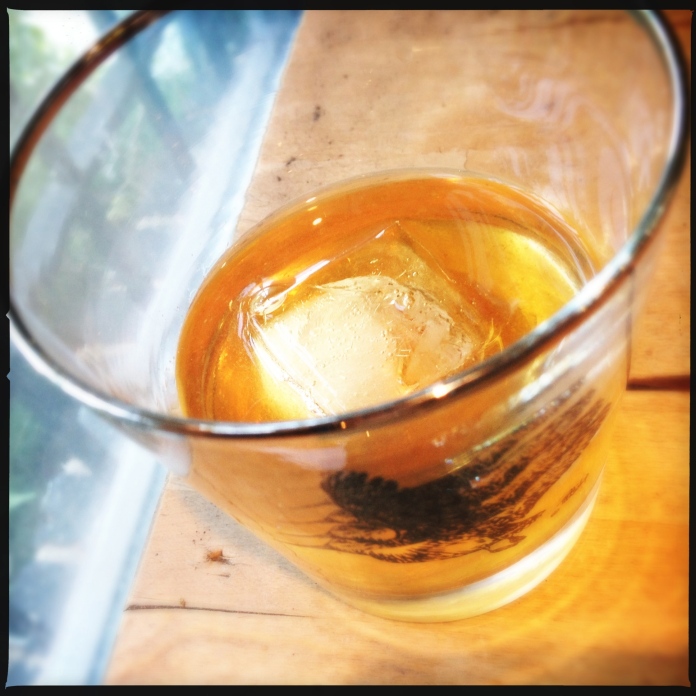
Welcome to the CCC. Very nice first challenge. I would have never thought about pickling peaches. Love the pairing with pork belly and that wild cocktail.
i thought about pickling peaches! what a great use for them, especially with that pork belly 🙂
Pingback: Pickle It! The Creative Cooking Crew Round-Up | FOODalogue
The pork belly is gorgeous and the pickled peaches are a fantastic summery treat! Really nicely done 🙂
Hmmmmm…..your pickled peach is something I might just eat! How ripe or unripe do the peaches have to be for perfect pickling? I love the story about the Mackinaw peach and the evil thread from Portland! (by the way, Mackinac in Michigan is spelled Mackinac but pronounced Mackinaw, if that’s where they got it from! ha!) I could see serving your peaches with a nice pork tenderloin in a salad! And maybe it’s time you tried to make a peach shrub for your cocktails?!
I actually know about Mackinac Island because, being from Wisconsin, I visited once in the summer. It’s gorgeous!
I’m with you, can’t get used to the weather out east even though I’ve been here now most of my life. I still hate summer heat. I come alive the moment fall starts and start to fade in June.
Love peaches though, my gram used to pickle them years ago and I loved them but was too young to get the recipe. Looking forward to trying yours… nummy with bacon too.
This left me speachless and that’s a hard thing for me. Just became a subscriber.
Wow! You are no slouch! What a fabulous complex contribution to the CCC pickle event! Love the photo of the pork belly searing in the pan.
Lori Lynn
What a gorgeous dish. Ok I will skip the chicharon but the pork belly with the pickled peach sounds sublime. I like the idea of preserving peaches a lot!
You had me a pickle butter on Triscuits. Wow, when I see a post like this, I wish we were neighbors! I’m going to market today to see if I can find end of season peaches, if not I’m bookmarking for next season. Great recipe ideas.
oh my gosh what a seriously awesome dish! i would absolutely love to eat this!
Pingback: Mystery of the pyramids. | The Upstart Kitchen
Pingback: Ten thousand lakes. | The Upstart Kitchen